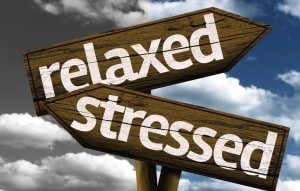It hasn’t been a speedy process but we continue be excited about the deep dive we’re offering up on the curriculum offered here at The National Center for Outdoor & Adventure Education (NCOAE).
As you might recall, our last blog post on this topic covered the educational group (Ed Group) topics of feelings identification, levels of communication/relationships and defense mechanisms. This time around we’re highlighting another batch of three Ed Group topics:
 Stress management
Stress management- Clear communication = conflict resolution
- Civic responsibility
Keep in mind that the big takeaway from all this curricula business, is not just to teach our students skills that enable them to become better climbers, hikers, surfers and rafters — but more important, to help them develop the ability to become better human beings and world citizens.
That’s why the NCOAE curriculum specifically deals with human skills. Because, let’s face it. Even on the trail, the honeymoon eventually comes to a screeching halt. And by honeymoon, we’re talking about those first few days of a wilderness excursion. We’re not going all Kumbaya on you, but that’s the time when everybody’s bubbly and happy and getting to know each other and enjoying the views. Problem is, group dynamics change — especially on an outdoor-based adventure.
And it’s most important that our course participants, whether they be preteens or upperclassmen, acquire the tools to deal with those dynamics when they emerge. Because they will emerge on both the trail and in the world from which they came.
So let’s start with our fourth Ed Group topic, stress management:
Outside of a traumatic event, stress usually builds up gradually, so when we arrive the point in an NCOAE course where expose participants to the stress management Ed Group, we ask them to describe personal situations where stress might have raised its ugly head. We ask them to tell us how they reacted — and dealt with stress in the past.
Then we conduct a few activities that offer participants a list of “triggers” and responses to those stresses. Students participate in a timed activity that pits one team against another, definitely providing a playground for stress. Then we discuss the levels of stress experienced, where on the body that stress was felt, and what was the internal dialog each participant had with that experience.
What often follows are examples of techniques for relaxation that instruct our students on how to rid themselves of this mental malady. And we wind up the topic by asking students to record in their journals possible coping strategies that they have found to be useful, and then share them with the rest of the group.
With our fifth Ed Group topic — clear communication = conflict resolution — we emphasize the importance of communicating our thoughts accurately, and receiving communication in a like fashion. Here we are quick to point out that identifying feelings and needs and making them clearly known — without making assumptions about the listener’s perspective — go a long way toward successful communicating.
With our students, we teach “I Feel” statements, as well as “Fact-Feel-Think-Want-Act” statements that help others understand your communication. Participants practice these two communication tools in a number of ways — and blindfolds aren’t too extreme when it comes to these lessons.
Finally, our sixth Ed Group reflection is civic responsibility, wherein we educate students about the choices they make when confronted by an event that is uncomfortable or unsavory. If someone is being bullied, for example, you have the opportunity to be harmful, be helpful, or remain neutral. And neutral is not where you want to be.
In one lesson associated of the civic responsibility Ed Group, students learn that the word “bystander” can be the worst description ever, especially when it comes to standing up for a friend or a total stranger who is being treated unfairly. That’s because for bystanders, it comes down to three choices: actively condoning a prejudice, injustice or violence; condemning the action; or remaining silent or walking away.
As part of this lesson, students participate in activities that question why people tend to avoid confrontation in such cases. They are asked to share a narrative about an incident in which, perhaps, they were a bystander and did nothing. This activity is followed by suggestions on how someone could have actively and peacefully addressed each of the situations shared.
Through the exchange of experiences — experiences which are informed by the NCOAE Curriculum — students safely wrestle with the complexities of real-world situations like stress, conflict and responsibility. And since they do so under the superb facilitation from trip leaders and guides trained in the NCOAE Curricula, the results are not to be ignored:
- Sixty-six (66) percent of NCOAE course participants realize increases in their self-confidence as a result of participating in one of our outdoor and adventure-based programs.
- Fifty (50) percent of our wilderness course participants say their interpersonal relationships improve because of their participation in an NCOAE course.
- Seventy-seven (77) percent of people who take our courses say their sense of security increases.
In the next blog post in this series, which is slated to publish on August 28, we’ll take on another trio of Ed Groups. In the meantime, if you’d like more information on the NCOAE Curriculum, please contact using our online contact form.
TALK TO US
Have any further questions about our courses, what you’ll learn, or what else to expect? Contact us, we’re here to help!
Leave a comment